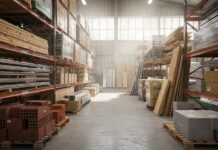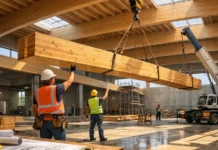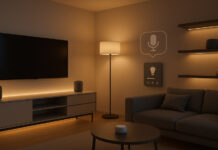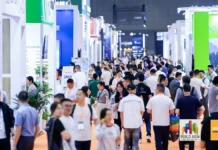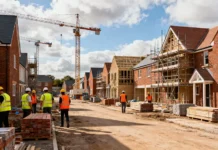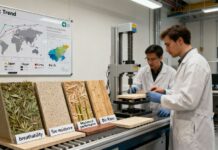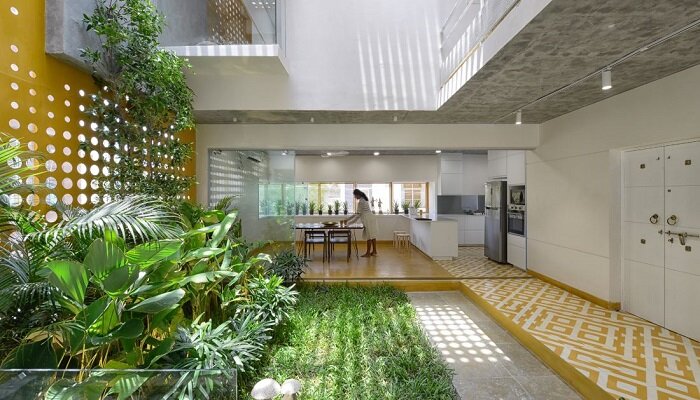Green construction is a term that is used to describe the process of creating a building or structure using environmentally friendly methods and materials. This can include using recycled materials, energy-efficient appliances and lighting, installing green roofs, and many other strategies. Green construction is becoming more popular than ever, as people are increasingly concerned about buildings’ impact on the environment. In this blog post, we will discuss what green construction is and how it relates to interior design!
What Are the Benefits of Green Construction?
There are many benefits to green construction, which is why more and more people are choosing to use it in their buildings.
Even businesses have been mandated to use green construction by various governmental regulations. Some of the most common benefits include:
It Can Help Conserve Natural Resources Such as Water and Energy
One of the major benefits of green construction is that it can help conserve natural resources, such as water and energy. By using materials such as recycled steel or insulated concrete form (ICF) blocks to construct a building, you can greatly reduce the amount of water and energy needed to create the structure.
It Can Help Reduce Pollution
Green construction also helps to reduce pollution. By using materials such as natural stones, recycled wood, and bamboo instead of traditional building products, you can significantly reduce the amount of pollutants being released into the atmosphere. This is because these materials are made from sustainable sources and don’t produce as much waste or require as much energy to manufacture.
It Can Help Improve Indoor Air Quality
Green construction techniques can also help to improve indoor air quality. By installing energy-efficient appliances and lighting systems, you can reduce the amount of pollutants circulating throughout your building. You can also use natural materials such as wool or cotton for insulation, which will help to absorb and trap airborne particles.
It Is Easier To Maintain Than Traditional Building Methods
Another benefit of green construction is that it can be easier to maintain than traditional building methods. Many of the materials used in green construction, such as recycled steel and insulated concrete form (ICF) blocks, are designed to last longer than conventional materials. In addition, these materials often require less maintenance than traditional building products.
It Is More Cost-effective Over Time
Lastly, green construction is more cost-effective over time. This is because the materials used are usually designed to be more durable, meaning that you won’t have to replace them as often. Additionally, using green construction techniques can help you save money on energy costs since your building will require less energy to operate.
How Does Green Construction Relate to Interior Design?
Green construction and interior design are closely related because both aim to create comfortable, energy-efficient spaces for people to live and work in. Green construction seeks to reduce the environmental impact of building projects by focusing on materials, energy efficiency, sustainability, and recyclability.
Interior design incorporates green elements that are proven to improve air quality and reduce pollution and waste. By working together, green construction and interior design can create healthier, more sustainable spaces for people to live and work in.
Green construction can be used to create energy-efficient lighting, heating, and cooling systems. It also focuses on selecting materials that are environmentally friendly and renewable. Energy-efficient appliances, such as air conditioners and refrigerators, help reduce the amount of energy consumed in a home or commercial space. Additionally, green building includes using building materials that have low volatile organic compounds (VOCs) and other toxins which can cause health problems. Companies like Designing Interiors have made it their mission to create green spaces that incorporate energy-efficient materials and appliances. As a result, these spaces are more comfortable and healthier for people to inhabit.
Examples of Green Interior Design Projects
Since green construction places a priority on sustainability, green interior design projects focus on ways to reduce the environmental impact of a space. This includes finding materials with low embodied energy (such as recycled products or sustainable wood), reducing waste and pollution by choosing local suppliers, and improving air quality through ventilation systems and natural lighting.
Some examples of specific green interior design projects include:
- Using natural, non-toxic materials such as bamboo and cork for flooring.
- Installing energy-efficient lighting systems and appliances to reduce power consumption.
- Utilizing eco-friendly paints and finishes that are free of VOCs (volatile organic compounds).
- Incorporating green walls or green roofs into the design to create a healthier indoor environment.
- Selecting furnishings made from recycled materials, such as wood and fabrics, or from sustainable sources like certified forests.
- Designing with low-flow fixtures to reduce water consumption.
Combining thoughtful green construction practices with innovative interior design makes it possible to create beautiful, sustainable spaces that are good for the environment and comfortable to live in. Through this process, interior designers can help create a more sustainable future by reducing waste and pollution, conserving natural resources, and improving air quality. With careful consideration of materials and design, green construction can provide an environmentally friendly and aesthetically pleasing option.





